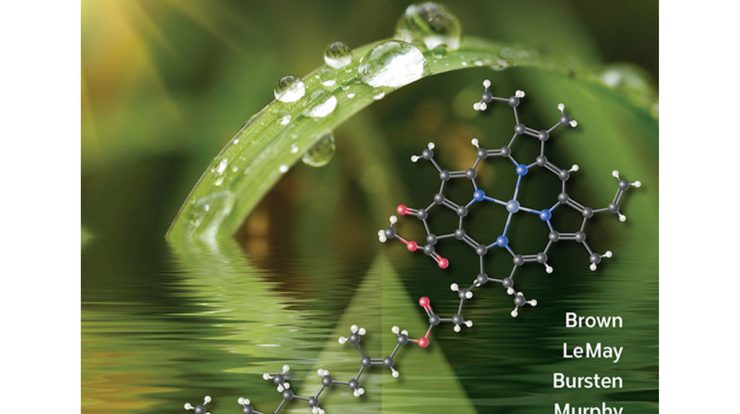Embark on an enlightening journey as we delve into the enigmatic world of any living thing crossword clue, deciphering the intricate tapestry of life’s characteristics, classifications, and profound ecological interactions.
Prepare to be captivated as we unravel the secrets of what truly defines a living organism, tracing the evolutionary threads that have woven the breathtaking diversity of life on our planet.
Definition and Explanation

In the context of a crossword puzzle, “any living thing” refers to an organism that possesses the characteristics of life. This includes all plants, animals, fungi, and microorganisms.
This phrase encompasses a wide range of biological entities, from the smallest bacteria to the largest whales. All living things share certain fundamental properties, such as the ability to reproduce, grow, and respond to stimuli.
Biological Classification
Living things are classified into different groups based on their shared characteristics. The broadest level of classification is into domains. There are three domains of life:
- Bacteria: Single-celled organisms that lack a nucleus.
- Archaea: Single-celled organisms that have a nucleus but lack membrane-bound organelles.
- Eukarya: Organisms that have a nucleus and membrane-bound organelles. This domain includes all plants, animals, fungi, and protists.
Characteristics and Features
Life is a complex and multifaceted phenomenon, but all living things share certain fundamental characteristics that distinguish them from non-living entities. These characteristics include:
- Organization:Living things are highly organized systems composed of cells, tissues, organs, and organ systems that work together to maintain homeostasis and carry out essential life functions.
- Metabolism:Living things use energy to acquire and transform matter and energy from their environment. This includes processes like respiration, digestion, and excretion.
- Reproduction:Living things produce offspring that inherit their genetic material, ensuring the continuity of the species.
- Growth and Development:Living things grow and develop over time, changing in size, shape, and complexity.
- Response to Stimuli:Living things can detect and respond to changes in their environment, allowing them to adapt and survive.
Differences Between Living and Non-Living Entities
The key differences between living and non-living entities are:
- Organization:Non-living entities are not organized into cells or have specialized structures for carrying out life functions.
- Metabolism:Non-living entities do not use energy or transform matter and energy from their environment.
- Reproduction:Non-living entities do not reproduce or create offspring.
- Growth and Development:Non-living entities do not grow or develop over time.
- Response to Stimuli:Non-living entities do not respond to changes in their environment.
Classification and Taxonomy
Living things exhibit an astounding diversity, ranging from microscopic organisms to colossal whales. To make sense of this complexity, scientists have developed systems for classifying and organizing organisms. These systems provide a framework for understanding the relationships between different species and their evolutionary history.
Hierarchical System of Taxonomy
The hierarchical system of taxonomy is a nested arrangement of taxonomic groups, each representing a level of inclusiveness. The broadest level is the domain, followed by kingdom, phylum, class, order, family, genus, and species. Each level is defined by specific characteristics that distinguish it from other groups.
Taxonomic Groups and Characteristics, Any living thing crossword clue
- Domain:The highest level of classification, dividing organisms into three domains: Bacteria, Archaea, and Eukarya.
- Kingdom:Within each domain, organisms are further divided into kingdoms. For example, the domain Eukarya includes the kingdoms Animalia, Plantae, Fungi, and Protista.
- Phylum:A phylum is a group of related classes within a kingdom. For example, the kingdom Animalia includes the phyla Chordata (animals with a notochord), Mollusca (soft-bodied animals), and Arthropoda (insects, spiders, and crustaceans).
- Class:A class is a group of related orders within a phylum. For example, the phylum Chordata includes the classes Mammalia (mammals), Aves (birds), Reptilia (reptiles), and Amphibia (amphibians).
- Order:An order is a group of related families within a class. For example, the class Mammalia includes the orders Primates (apes, monkeys, and humans), Carnivora (dogs, cats, and bears), and Rodentia (rats, mice, and squirrels).
- Family:A family is a group of related genera within an order. For example, the order Primates includes the families Hominidae (humans and chimpanzees), Cercopithecidae (monkeys), and Cebidae (capuchins).
- Genus:A genus is a group of related species within a family. For example, the family Hominidae includes the genera Homo (humans), Pan (chimpanzees), and Gorilla (gorillas).
- Species:The species is the fundamental unit of classification, representing a group of organisms that can interbreed and produce fertile offspring. For example, the genus Homo includes the species Homo sapiens (humans), Homo neanderthalensis (Neanderthals), and Homo erectus (upright man).
Biological Processes
Living organisms are intricate systems that require a constant flow of energy and matter to sustain themselves. These essential processes, known as biological processes, encompass a wide range of functions that enable organisms to grow, reproduce, and maintain homeostasis.
Metabolism
Metabolism is the sum of all chemical reactions that occur within an organism. These reactions provide the energy and building blocks necessary for cell growth, repair, and reproduction. Metabolism can be divided into two main categories: catabolism and anabolism. Catabolism breaks down complex molecules into simpler ones, releasing energy in the process.
Anabolism uses this energy to build new molecules, such as proteins and nucleic acids.
Respiration
Respiration is the process by which organisms obtain oxygen from their environment and use it to generate energy. Cellular respiration occurs in the mitochondria of cells and involves the breakdown of glucose in the presence of oxygen. This process releases energy in the form of ATP, which is used to power various cellular activities.
Reproduction
Reproduction is the process by which organisms create new individuals of the same species. Sexual reproduction involves the fusion of gametes (sperm and egg) to create a zygote, which develops into a new organism. Asexual reproduction, on the other hand, involves the creation of new individuals from a single parent organism.
Homeostasis
Homeostasis is the ability of organisms to maintain a stable internal environment despite changes in the external environment. It involves a complex network of feedback mechanisms that regulate various physiological parameters, such as body temperature, pH, and blood sugar levels.
Homeostasis is essential for the proper functioning of cells and tissues and ultimately for the survival of the organism.
Diversity and Evolution

The Earth is home to an astonishing array of living things, from microscopic bacteria to towering trees and massive whales. This incredible diversity is a testament to the power of evolution, the process that has shaped life on our planet for billions of years.
Mechanisms of Evolution
Evolution is driven by several key mechanisms, including natural selection, genetic drift, and mutation. Natural selection is the process by which organisms with traits that make them better suited to their environment are more likely to survive and reproduce. Over time, this can lead to the accumulation of advantageous traits in a population.
Genetic drift is the random change in the frequency of alleles in a population. This can occur due to chance events, such as the death of an individual or the failure of an allele to be passed on to offspring.
Genetic drift can lead to the loss of genetic diversity and can be particularly important in small populations.
Mutation is the process by which the DNA of an organism changes. Mutations can be caused by a variety of factors, including exposure to radiation or chemicals. Mutations can be harmful, beneficial, or neutral. Beneficial mutations can provide organisms with new traits that help them to survive and reproduce in their environment.
Adaptations
Evolution has led to the development of a wide range of adaptations that allow organisms to survive in different environments. For example, some organisms have developed thick fur to protect them from the cold, while others have evolved camouflage to help them hide from predators.
Some organisms have even evolved the ability to produce their own food through photosynthesis.
Need help with that “any living thing” crossword clue? If so, you’ll need to check out lesson 10 time signatures 3/4 . It has all the answers you need. Any living thing, after all, needs a sense of rhythm and timing to survive and thrive in this world, just like in music.
Adaptations are the result of natural selection. Over time, organisms that are better adapted to their environment are more likely to survive and reproduce. This can lead to the accumulation of advantageous traits in a population and the evolution of new species.
Ecological Interactions: Any Living Thing Crossword Clue
The world is full of living things that depend on each other for survival. These interactions between organisms and their environment form complex ecosystems. Understanding these interactions is essential for comprehending the balance and stability of our planet.
Ecological interactions can be categorized into different types, each playing a crucial role in shaping the dynamics of an ecosystem. These relationships range from competition for resources to symbiotic partnerships that provide mutual benefits.
Types of Ecological Relationships
- Competition:When organisms compete for limited resources such as food, water, or territory.
- Predation:When one organism (predator) hunts and consumes another (prey) for sustenance.
- Symbiosis:When two organisms live in close association, with different forms of interaction, including mutualism, commensalism, and parasitism.
Importance of Biodiversity
The diversity of life on Earth is vital for maintaining healthy ecosystems. Biodiversity contributes to ecosystem stability, resilience, and productivity. A diverse range of species ensures the availability of various ecological roles, such as nutrient cycling, pollination, and seed dispersal.
The loss of biodiversity can have severe consequences, including ecosystem disruption, reduced ecosystem services, and increased vulnerability to environmental changes. Preserving biodiversity is crucial for the health and well-being of our planet.
FAQs
What is the primary characteristic that distinguishes living things from non-living entities?
Metabolism, the ability to convert energy and matter for growth and maintenance.
How does the concept of homeostasis contribute to the survival of living organisms?
Homeostasis regulates internal conditions, maintaining a stable environment essential for survival.
Explain the significance of biodiversity in ecological systems.
Biodiversity enhances ecosystem resilience, promotes stability, and supports a wide range of ecological functions.

